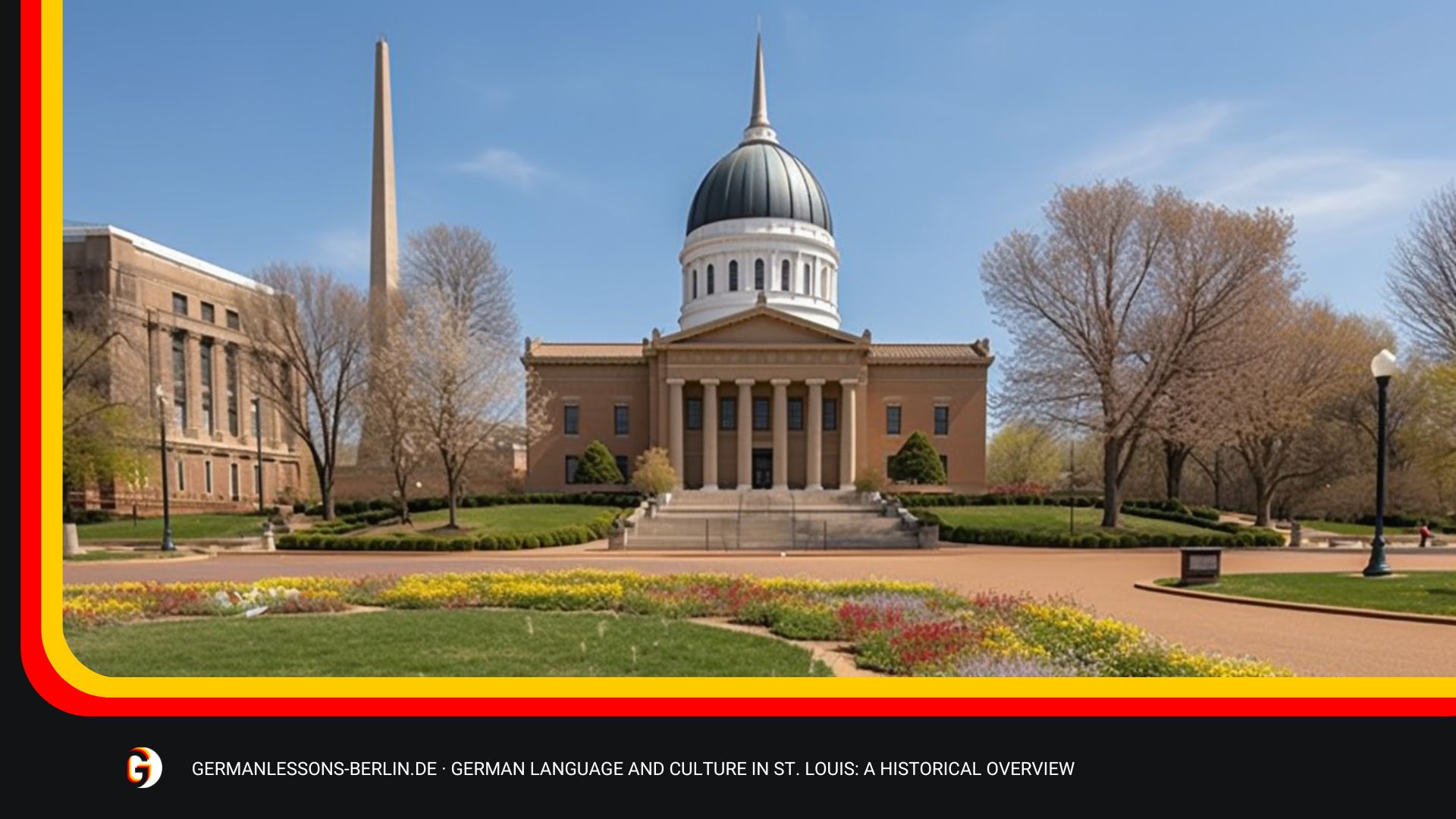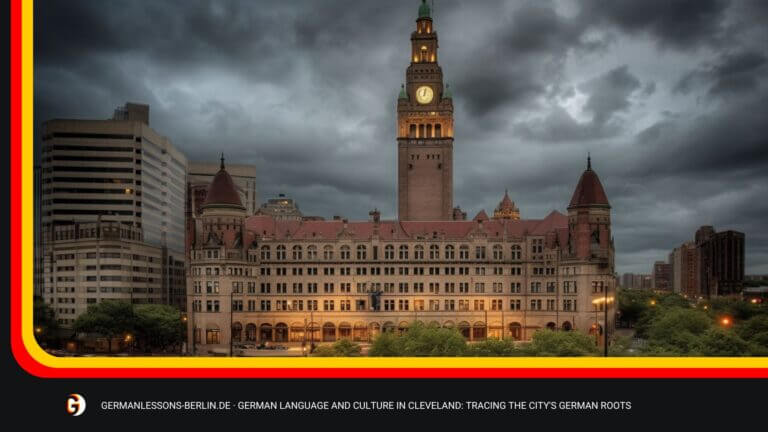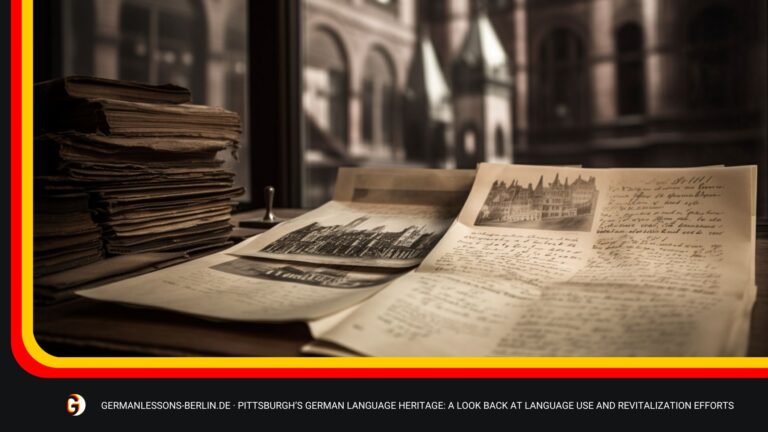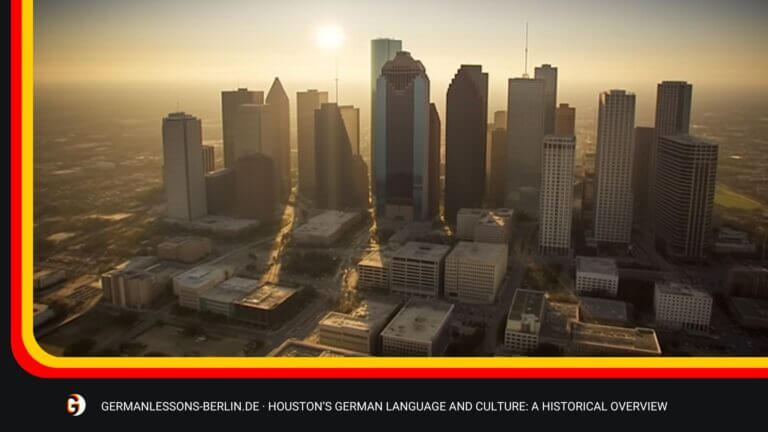St. Louis, Missouri, has a rich history of German language and culture that dates back to the 19th century. This vibrant part of St. Louis’ past is still alive today, with many residents still proudly speaking the language and celebrating its culture in everyday life. There’s even an annual celebration called “Festival of Nations,” which pays homage to this heritage by hosting cultural events such as traditional dance performances, music concerts, and food tastings. But what can we learn from this fascinating slice of St. Louis’ history?
This article will provide readers with an overview of how the German language and culture have evolved in St. Louis, exploring both the unique contributions it made during its heyday, as well as taking a look at how present-day generations have kept this vital aspect of their city alive for future generations to enjoy. We’ll also be looking at some interesting facts about the impact that immigration had on St. Louis’ population throughout its various stages of development – including some surprising ways it continues to shape our local landscape today!
So join us on this journey through time as we uncover stories and insights into one of St. Louis’ most vibrant cultures: German Language & Culture in St. Louis – A Historical Overview!
Table of Contents
Migration Of German Immigrants To St. Louis
The migration of German immigrants to St. Louis has been an integral part of the city’s history since its founding in 1764. As early as 1819, there were records of Germans arriving in the area and settling down, often with families already living in St. Louis or migrating from other parts of Europe or North America. By 1840, nearly 10% of St. Louis’ population was made up of German immigrants, and this number continued to grow over time. As a result, their presence had a significant impact on not only the demographics but also the culture and economy of the region.
Genealogy records show that these German immigrants typically arrived through eastern ports like New York City before making their way westward – usually by boat along rivers such as the Missouri River – to settle in areas near St. Louis like Carondelet, Belleville and East St. Louis among others. This immigration pattern can be attributed mainly to economic opportunities within cities at the time; many individuals sought better wages than what could be earned back home for skilled labor jobs within factories and mines across America’s heartland regions. Consequently, new communities began forming around these industries, which attracted more migrants looking for work outside Germany’s borders during those years between 1830-1850 when industrialization was transforming the country into an industrialized nation-state.
The cultural differences between native inhabitants and newcomers created tension between both groups leading to clashes over language, customs, and values while creating unique experiences amongst local migrant populations in terms of identity formation and assimilation processes in American society during that period. For example, some German settlers chose to Anglicize their names upon arrival. In contrast, others decided against it out of fear they would lose their heritage if they did so—highlighting how deeply divided opinions about social issues were even amongst fellow migrants who shared similar backgrounds yet responded differently under different circumstances.
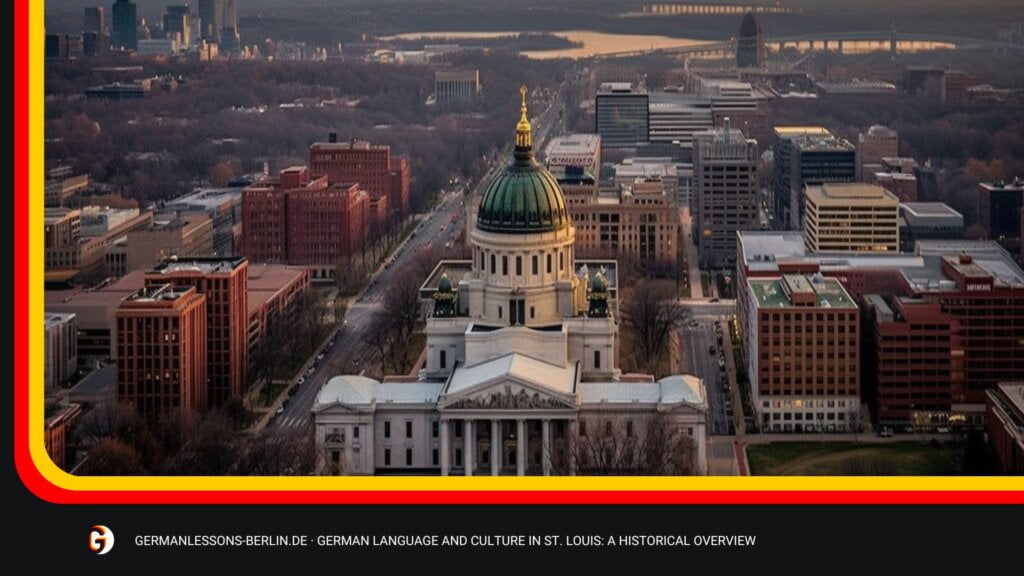
Early German Settlements And Businesses
St. Louis was known as a major destination for German immigrants in the 1800s, and early German settlers quickly began establishing businesses in the city. Many of these businesses became well-known among St. Louis residents, helping to spread German culture throughout the area.
The first wave of German settlement occurred in 1829 when fifteen families from Germany arrived together and established their community near Soulard Market. This small settlement eventually grew into a larger one that included several different churches, schools, bakeries, breweries, and other stores owned by Germans who had immigrated to St. Louis. By 1850, more than 25% of all workers employed in manufacturing were of German descent, while 30% worked as merchants or traders within St. Louis’ thriving economy at the time.
Early on, many of these business owners opened beer gardens that served traditional German food and drinks like schnitzel, sauerkraut, and lager beer for locals to enjoy alongside live music performances from local musicians playing polka tunes popular amongst Germans living in America during this period. These businesses helped preserve elements of German culture even after immigration declined due to World War I restrictions on citizens entering the United States from Europe. As such, they continue to be important places for those interested in learning about German heritage found throughout St. Louis communities today.
Development Of The German-American Community
The German-American community of St. Louis began to develop rapidly in the 19th century due to a large influx of immigrants from Germany. This growth was accompanied by increased social organizations and associations that sought to preserve their cultural identity while assimilating into American life. These groups included churches, newspapers, schools, fraternities, and libraries which all served as essential pillars for developing this vibrant community.
By the early 20th century, many members of the German-American community had achieved considerable levels of success and prosperity within St. Louis society. This led to increased assimilation into mainstream culture, with some individuals embracing aspects of both worlds – celebrating traditional holidays alongside more contemporary ones, such as Independence Day or Labor Day. Despite significant changes over time, many elements of the German language and culture are still found throughout St. Louis today – a testament to the strength and resilience of this unique ethnic group’s history in the city.
From humble beginnings centuries ago to its current status within modern-day St. Louis, it is clear that the story of German-Americans has been richly textured by generations of hard work and dedication to preserving cultural heritage amidst significant change over time.
Preservation Of German Heritage Through Education
St. Louis has long been a significant hub for German-American activity, and its strong connection to the homeland is evident in many aspects of life here. Education has played an essential role in preserving the city’s German heritage over time. For example, numerous schools have offered courses that teach students about Germany’s language and culture. This helps to ensure that future generations are aware of their roots and can carry on traditions from previous generations.
In addition to teaching German language skills, St. Louis schools provide plenty of opportunities for students to experience cultural activities related to German history and customs. For example, they may be able to attend lectures by visiting experts or visit local museums with exhibits dedicated to sharing information about German immigrants who settled in Missouri centuries ago. Through these experiences, students better appreciate how their ancestors helped shape the region’s identity today.
Furthering this mission of preservation through education is that some area schools offer special programs geared explicitly towards keeping the rich tradition of German culture in St. Louis. These include workshops on cooking traditional dishes such as schnitzel and strudel, as well as classes on folk music and dances like polka and waltz, which were popularized by earlier waves of immigrants from Central Europe. By participating in these activities, young people become more connected with their family backgrounds and broader histories surrounding them while growing up in St. Louis today.
It is clear, then, that education plays a key role when it comes to maintaining an awareness of one’s past while still looking forward to what lies ahead — whether it pertains directly to one’s ancestry or, more generally, regarding the collective memories shared among all citizens living in this great city together.
Language And Dialects Spoken In St. Louis
St. Louis is home to many languages, with German being one of the most prominent. Since its founding, the German language and dialects have been spoken in St. Louis, with various variations on the language used throughout history.
The earliest known form of German spoken in St. Louis was the Ripuarian dialect, which began appearing as early as 1809 when large numbers of German immigrants settled in the city. This dialect was quickly replaced by other forms, such as High German, Bavarian-Austrian, Alsatian French-German, and Swiss-German varieties, during the mid-19th century due to increased immigration from these regions. With more than ten different dialects in the population at this time, it became common for people living close to each other to speak two or even three distinct types of German simultaneously. Although English eventually supplanted all other major languages in St. Louis by 1930, there are still significant pockets where different kinds of German can be found today.
In addition to traditional varieties of spoken German, unique slang terms were created over time, reflecting American culture and local lifestyle trends. People often use expressions derived from either standard or regional dialects based on context or situation. For example, ‘Schnickelfritz’ was an affectionate term commonly used amongst family members that combined High and Low German elements for humorous effect – something like calling someone ‘rascal’. Similarly, numerous phrases borrowed from Yiddish could still be heard up until recently around some parts of town. However, they may now be primarily forgotten outside sure older generations who remember them fondly.
It’s clear that despite centuries passing since its introduction into St. Louis society, the influence of various forms of the German language remains vital to this day through expressions shared between friends and families – forming part not just of our cultural identity but our collective memories too.
Popular Dishes & Cuisine Influenced By German Culture
St. Louis culture and cuisine have been heavily influenced by the German immigrants who settled in the area centuries ago. Many of these influences, from traditional recipes to specialty dishes, can still be found today.
German-American cuisine has made a lasting impression on St. Louis restaurants, offering an array of flavors enjoyed throughout the city. A popular dish is Schnitzel – fried veal cutlets served with potatoes or noodles – which can now be found at numerous eateries around town. Other favorites include bratwurst, sauerkraut, and spaetzle, all staples of German food culture that remain extremely beloved among locals.
German-Americans’ influence extends beyond their culinary heritage; it has also shaped other aspects of life in St. Louis. One example is a gooey butter cake, the delectable dessert created in 1930s South St. Louis by John Hoffman for his wife’s birthday party guests. This delicious treat quickly became one of the most iconic St. Louis specialties and continues to draw visitors from near and far every year!
From classic meals to delicious desserts, there’s no denying that German cultural traditions have significantly impacted what makes St. Louis unique today – something we should all appreciate and enjoy!
Traditional Customs & Celebrations
St. Louis is rich in German culture and customs, some of which have been celebrated for generations. Oktoberfest has become one of the most popular celebrations in the city, with thousands of people gathering to enjoy traditional foods and beverages, music, dance, and games. In addition to this annual event, Maypole dancing at local churches remains an important tradition, as does Schützenfest (or rifle shooting). Christmas time brings caroling through neighborhoods while Christkindlmarkts fill public spaces with festive decorations and fun activities.
Such traditions remind us that many St. Louisans remain deeply connected to their heritage even today. From traditional dishes served at family gatherings to numerous events throughout the year celebrating various aspects of German culture, it’s clear that these customs still play an integral role in shaping life in St. Louis today, so much so that they continue to bring joy and friendship across cultures for both old and new residents alike – a testament to the lasting power of German language and culture here in St. Louis!
Literary Contributions To The Region
The German-American contributions to literary culture in St. Louis are both long and significant. From the earliest days of settlement, German-language literature has been a major part of the region’s cultural landscape. Throughout their history here, German-Americans have produced many authors who wrote works in both English and German, as well as those who worked exclusively in the language of their ancestors.
German-American writers such as Carl Schurz, Joseph Freund, and Heinrich Rauchfuss were some of the more influential ones during this period. Their works reflect on life in St. Louis at that time and celebrate the customs and beliefs brought over by immigrants from Germany before them. These authors often held readings or book tours around town; these events drew large crowds and served to strengthen further ties between Germans living here and abroad.
Today there remains an active community of German-language authors working in St. Louis, with new books regularly published. Additionally, numerous annual literary festivals bring together readers from across Missouri for lectures, discussions, and readings by contemporary authors writing in German and English. This vibrant tradition continues to be carried forward through modern-day authors whose work reflects the same themes found throughout centuries past, celebrating stories of identity, family ties, and faithfulness to one’s roots—all set against a backdrop of what it means to live in St. Louis today.
Music, Arts & Architecture
St. Louis is home to various music, art, and architecture that its German heritage has influenced. From the city’s iconic Gateway Arch to traditional family bands playing polka tunes on Sunday afternoons, St. Louis has integrated German culture into its vibrant arts community in many ways:
- German-Influenced Music – Traditional German folk songs are still performed throughout St. Louis today, often during Oktoberfest celebrations or life events such as the annual Schnuck Family Band Festival. Other examples of German-influenced music can be found in jazz clubs near Soulard Market, where brass and woodwind instruments create a unique blend of European and African American sounds popularized by early 20th-century immigrants from Germany and other parts of Europe.
- German-Inspired Art – Throughout St. Louis, numerous sculptures and artwork are inspired by the city’s rich cultural history with Germany. One example is the sculpture “The Venerable Father Duchow,” which stands outside Saint Peter Church in Soulard; it celebrates an influential 19th-century pastor born in Prussia (now part of modern-day Germany). Additionally, several murals depicting scenes from historic Bavarian villages can be seen around town, reminding viewers of St. Louis’ ties to this region of Europe.
- German-Style Architecture – The most visible example of German influence on St. Louis architecture is undoubtedly the famous Gateway Arch that looms over the downtown skyline; however, many smaller buildings also display evidence of this particular style, including churches such as Old Cathedral and Immanuel Lutheran Church, both built during the 1800s when large numbers of Germans settled in Missouri for economic opportunities offered by river trade commerce routes like those along the Mississippi River near St . Louis.
From lively outdoor concerts featuring traditional german folk songs to street corners adorned with Bavarian-themed murals, St. Louis proudly displays its German roots through its diverse range of music, art, and architecture offerings across the cityscape each year!
Legacy Of The German Presence In St Louis
The German influence in St Louis is profound and can be seen all around the city. From the architecture to the cuisine, there are reminders of Germany everywhere. The legacy that Germans left behind has shaped this city for centuries and continues to do so today.
One of the most apparent remnants of their presence is in the form of architecture. Many buildings throughout St Louis were designed with a distinctly German-influenced style. These structures feature ornate stonework, intricate details like stained glass windows, and many other elements inspired by traditional German design principles. They’re an integral part of the city’s landscape and serve as a reminder of its deep connection to Germany’s past.
German culture also lives on through food in St Louis – from sauerkraut to schnitzel, countless dishes have been brought over from across the pond. German restaurants dotting downtown streets offer patrons classic meals such as bratwurst with sauerkraut or potato pancakes alongside beer brewed using time-honored recipes from Europe. This type of fare creates an atmosphere that allows people to experience life when these dishes first arrived in America and gain insight into how much they’ve evolved since then.
In addition to its architectural designs and cuisines, German influence can also be found in literature written about St Louis over the years; authors such as Mark Twain wrote works filled with references to Germany which provide readers with glimpses into how immigrants adopted new customs while still maintaining their cultural heritage at home. The impact made by Germans who settled here will remain relevant for generations to come – no matter where they originated from originally.
Frequently Asked Questions
What Are The Current German Language And Culture Offerings In St. Louis?
St. Louis is home to a vibrant German language and culture scene, offering a range of activities for those who want to learn more about the language and culture. From classes teaching conversational German to cultural events celebrating Germany’s rich history, there are plenty of options available in St. Louis to help locals explore their connection with this fascinating country.
For those looking to take their knowledge beyond basic conversation, numerous schools offer German language classes ranging from beginner to advanced. Many also provide resources such as tutoring services or after-school activities focused on building fluency in the language. Additionally, several organizations offer weekly meetings where members can practice speaking in German while learning more about the culture behind it.
Finally, for people interested in taking part in larger-scale celebrations dedicated to all things German, various cultural centers host annual festivals throughout the year featuring live music, food vendors showcasing traditional cuisine from Germany, and much more. These festivals often attract crowds of thousands eager to experience firsthand what makes German culture so unique and captivating!
How Has The German Culture In St. Louis Changed Over Time?
How has the German culture in St. Louis changed over time? To understand this, one must look at the history of its German-American community and how it evolved as the city did. In the early 1800s, many individuals from what was then Prussia migrated to St. Louis for economic opportunity. This influx of people brought their language and customs, quickly becoming prominent life features in St. Louis.
However, during World War I, there were shifts in both language and culture due to anti-German sentiment that arose throughout America at that time. Many began speaking English instead of German, and some aspects of German cultures, such as music, theater, and festivals, were no longer practiced publicly. Despite these changes, many Germans lived in St. Louis and still preserved their heritage privately within their homes or organizations like churches or fraternal societies.
Fast forward several decades later to today where we find a much different landscape than before WWI; while German is not as widely spoken now as it once was, there are still plenty of opportunities available in St. Louis to learn about the German language and culture – such as cultural centers, schools offering classes on the subject matter, events hosted by local organizations celebrating Germany’s contributions, etc. It is clear that although there have been many changes in language and culture since the first settlers arrived centuries ago, the influence they had on St. Louis remains evident even today through those who proudly celebrate their heritage.
How Has The German Presence Influenced The City’S Economy?
The German presence in St. Louis has significantly influenced the city’s economy for centuries. From early German-American businesses to modern investment opportunities, Germans have contributed considerably to the economic growth of this bustling midwestern city. Here are some examples of how German culture and industry have impacted St. Louis:
– The first wave of immigrants: In the late 19th century, many Germans immigrated to St. Louis and quickly established themselves as successful business owners. These entrepreneurs became leaders in industries such as brewing and baking, contributing to the commercial success of their new homes.
– German Investment: As an essential hub for trade, banking, and industry, St. Louis attracted wealthy German investors who saw great potential in its growing infrastructure. Over time they invested heavily in local businesses, which led to increased job availability and economic growth throughout the region.
– Modern Development: Today, Germany is still investing in St. Louis’ economy, with major companies like Siemens AG having offices here. Furthermore, Volkswagen recently announced plans to build a manufacturing plant outside of town that will create thousands of jobs and bring millions into the area’s coffers through taxes and wages paid out by employees there.
These investments illustrate just how deeply integrated German culture has become within St. Louis society over the years—from small family-run shops to large multinational corporations setting up shop here—and how influential it remains today when driving economic development forward in these parts!
What German-American Organizations Are Active In St. Louis Today?
Today, the German presence in St. Louis is still strongly felt through some active german-american organizations dedicated to preserving and celebrating the language and culture. From historical landmarks such as The Hill – home to many German immigrants during the 19th century – to modern-day festivals and events, these organizations have worked hard to ensure that the German language and customs remain an essential part of life in St. Louis:
– The Missouri Historical Society collects artifacts from around the world to help preserve local cultural heritage.
– The Schiller Institute promotes understanding between Germans, Americans, and other cultures.
– The American Association of Teachers of German (AATG) offers resources for those interested in learning more about the German language and culture.
– The Goethe Institut provides classes on literature, film, art history, music, philosophy, politics, economics, and more related to Germany’s rich culture.
– The International Institute of St. Louis sponsors several annual events, including Oktoberfest, which celebrates traditional Bavarian food and drink and folk dancing performances from around the globe.
These organizations serve as a source of education and offer opportunities for residents to connect by participating in various activities throughout the year. For example, AATG hosts a “Deutschland Treffen” or “German Reunion” every summer, where locals can share stories about their experiences living in or visiting Germany. Additionally, members of these organizations work closely with schools across St. Louis – providing educational materials such as books and videos – so students can learn more about their cultural backgrounds while participating in fun activities like singing songs or making crafts inspired by German folklore.
Thanks in large part to these incredible groups working diligently behind the scenes, generations of St. Louisans continue to enjoy unique perspectives into a beloved yet often misunderstood community – one that has been integral in shaping our city into what it is today!
How Can I Get Involved In The German-American Community In St. Louis?
Plenty of opportunities are available if you’re looking for ways to get involved with the German-American community in St. Louis. From cultural activities to language classes, joining a local organization is one of the most meaningful and rewarding ways to connect with other German-Americans living in the area.
The best place to start is by researching some of the many German-American organizations in St. Louis today. These groups provide an invaluable resource for anyone interested in learning about their cultural heritage or exploring different aspects of German culture. Many of these clubs host regular events such as lectures, film screenings, and dinners where members can mingle and network with like-minded individuals from around the city. Additionally, several organizations offer various language courses to help people learn or brush up on their conversational skills in German.
There are numerous volunteer opportunities within the German-American community for those who prefer a more hands-on approach. Whether helping out at a festival or assisting with fundraising efforts for a charity event, getting involved directly allows individuals to make meaningful connections while contributing positively towards more excellent civic engagement initiatives.
No matter your interests or skill level, there’s sure to be something that appeals to you if you take the time to explore all the options available within this vibrant and welcoming community in St Louis. So why not take advantage of what’s on offer and jump into experiencing everything this wonderful city has to offer?
Conclusion
In conclusion, the German language and culture have had a strong presence in St. Louis for centuries. There are numerous opportunities to experience the city’s German-American community’s history and current offerings. From events like Oktoberfest celebrations to organizations such as the German Cultural Society and The International Institute of St. Louis, many ways exist to get involved with this vibrant part of St. Louis’ cultural history.
It is inspiring how many people take pride in their heritage by actively participating in activities related to their ancestry. For example, I recently attended an event hosted by the German Cultural Society, which celebrated traditional Bavarian folk dances and songs from Germany—it was incredible! And if you’re looking for other ways to participate in the local German scene, check out all St. Louis offers. From churches providing religious services in German to schools teaching modern or classical languages courses, there is something here for everyone interested in learning more about Germany and its culture here in Missouri!
Several external resources are available to learn about the city’s German language and culture. The Missouri Historical Society, the German American Heritage Foundation, and the German American Committee of St. Louis are all organizations that celebrate and promote St. Louis’ German-American heritage. Additionally, the St. Louis Public Library offers many resources related to the German language and culture, including language-learning materials, books, and films. By exploring these resources, one can better understand the historical significance of the German language and culture in St. Louis.

